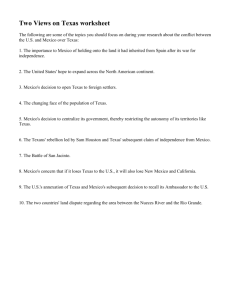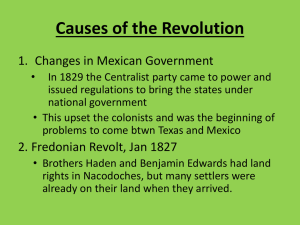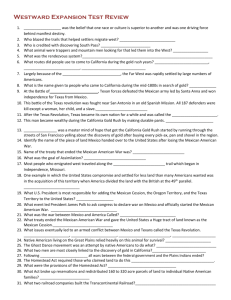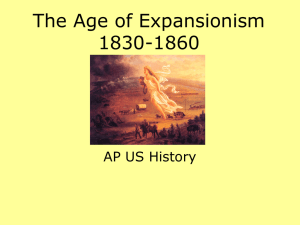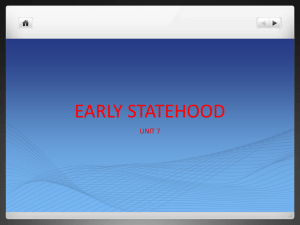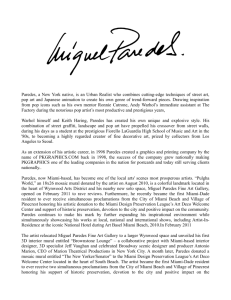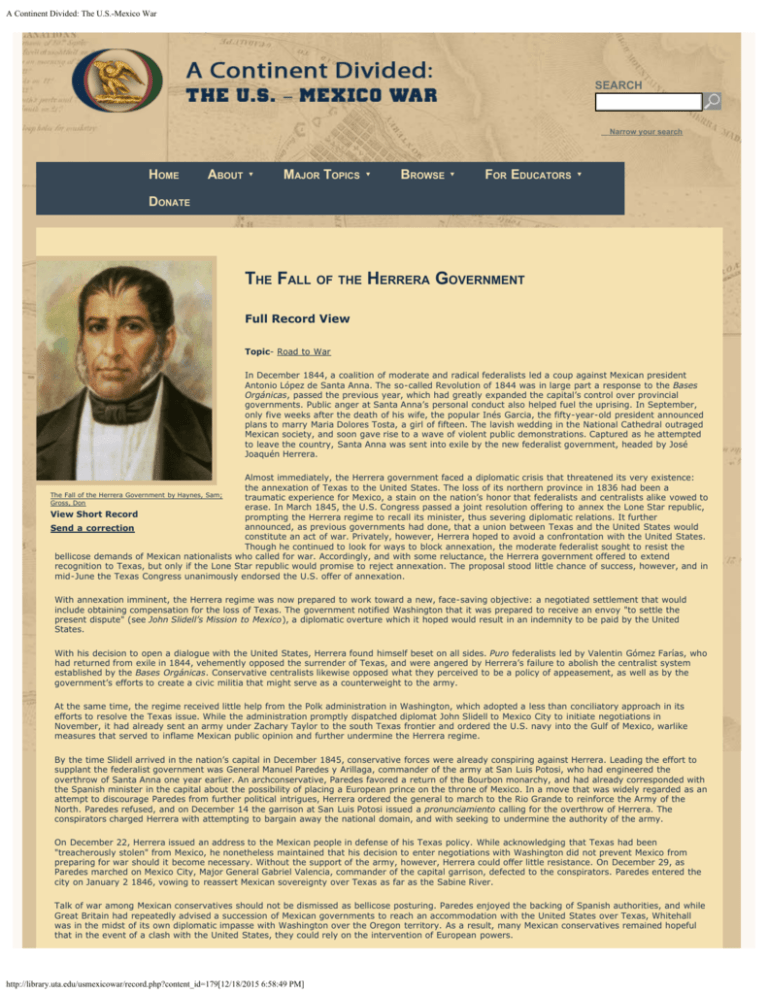
A Continent Divided: The U.S.-Mexico War
SEARCH
Narrow your search
HOMe
ABOUt ▾
MaJOr TOPIcs ▾
BrOWse ▾
FOr EDUcatOrs ▾
DOnate
The FaLL
Of the
Herrera GOVernMent
Full Record View
Topic- Road to War
In December 1844, a coalition of moderate and radical federalists led a coup against Mexican president
Antonio López de Santa Anna. The so-called Revolution of 1844 was in large part a response to the Bases
Orgánicas, passed the previous year, which had greatly expanded the capital’s control over provincial
governments. Public anger at Santa Anna’s personal conduct also helped fuel the uprising. In September,
only five weeks after the death of his wife, the popular Inés Garcia, the fifty-year-old president announced
plans to marry Maria Dolores Tosta, a girl of fifteen. The lavish wedding in the National Cathedral outraged
Mexican society, and soon gave rise to a wave of violent public demonstrations. Captured as he attempted
to leave the country, Santa Anna was sent into exile by the new federalist government, headed by José
Joaquén Herrera.
Almost immediately, the Herrera government faced a diplomatic crisis that threatened its very existence:
the annexation of Texas to the United States. The loss of its northern province in 1836 had been a
The Fall of the Herrera Government by Haynes, Sam;
traumatic experience for Mexico, a stain on the nation’s honor that federalists and centralists alike vowed to
Gross, Don
erase. In March 1845, the U.S. Congress passed a joint resolution offering to annex the Lone Star republic,
View Short Record
prompting the Herrera regime to recall its minister, thus severing diplomatic relations. It further
announced, as previous governments had done, that a union between Texas and the United States would
Send a correction
constitute an act of war. Privately, however, Herrera hoped to avoid a confrontation with the United States.
Though he continued to look for ways to block annexation, the moderate federalist sought to resist the
bellicose demands of Mexican nationalists who called for war. Accordingly, and with some reluctance, the Herrera government offered to extend
recognition to Texas, but only if the Lone Star republic would promise to reject annexation. The proposal stood little chance of success, however, and in
mid-June the Texas Congress unanimously endorsed the U.S. offer of annexation.
With annexation imminent, the Herrera regime was now prepared to work toward a new, face-saving objective: a negotiated settlement that would
include obtaining compensation for the loss of Texas. The government notified Washington that it was prepared to receive an envoy "to settle the
present dispute" (see John Slidell’s Mission to Mexico), a diplomatic overture which it hoped would result in an indemnity to be paid by the United
States.
With his decision to open a dialogue with the United States, Herrera found himself beset on all sides. Puro federalists led by Valentin Gómez Farías, who
had returned from exile in 1844, vehemently opposed the surrender of Texas, and were angered by Herrera’s failure to abolish the centralist system
established by the Bases Orgánicas. Conservative centralists likewise opposed what they perceived to be a policy of appeasement, as well as by the
government’s efforts to create a civic militia that might serve as a counterweight to the army.
At the same time, the regime received little help from the Polk administration in Washington, which adopted a less than conciliatory approach in its
efforts to resolve the Texas issue. While the administration promptly dispatched diplomat John Slidell to Mexico City to initiate negotiations in
November, it had already sent an army under Zachary Taylor to the south Texas frontier and ordered the U.S. navy into the Gulf of Mexico, warlike
measures that served to inflame Mexican public opinion and further undermine the Herrera regime.
By the time Slidell arrived in the nation’s capital in December 1845, conservative forces were already conspiring against Herrera. Leading the effort to
supplant the federalist government was General Manuel Paredes y Arillaga, commander of the army at San Luis Potosi, who had engineered the
overthrow of Santa Anna one year earlier. An archconservative, Paredes favored a return of the Bourbon monarchy, and had already corresponded with
the Spanish minister in the capital about the possibility of placing a European prince on the throne of Mexico. In a move that was widely regarded as an
attempt to discourage Paredes from further political intrigues, Herrera ordered the general to march to the Rio Grande to reinforce the Army of the
North. Paredes refused, and on December 14 the garrison at San Luis Potosi issued a pronunciamiento calling for the overthrow of Herrera. The
conspirators charged Herrera with attempting to bargain away the national domain, and with seeking to undermine the authority of the army.
On December 22, Herrera issued an address to the Mexican people in defense of his Texas policy. While acknowledging that Texas had been
"treacherously stolen" from Mexico, he nonetheless maintained that his decision to enter negotiations with Washington did not prevent Mexico from
preparing for war should it become necessary. Without the support of the army, however, Herrera could offer little resistance. On December 29, as
Paredes marched on Mexico City, Major General Gabriel Valencia, commander of the capital garrison, defected to the conspirators. Paredes entered the
city on January 2 1846, vowing to reassert Mexican sovereignty over Texas as far as the Sabine River.
Talk of war among Mexican conservatives should not be dismissed as bellicose posturing. Paredes enjoyed the backing of Spanish authorities, and while
Great Britain had repeatedly advised a succession of Mexican governments to reach an accommodation with the United States over Texas, Whitehall
was in the midst of its own diplomatic impasse with Washington over the Oregon territory. As a result, many Mexican conservatives remained hopeful
that in the event of a clash with the United States, they could rely on the intervention of European powers.
http://library.uta.edu/usmexicowar/record.php?content_id=179[12/18/2015 6:58:49 PM]
A Continent Divided: The U.S.-Mexico War
Once in office, however, Paredes found little support for monarchism, especially among federalist puros, who promptly set about to undermine his
authority. Obliged to maintain an unyielding stance on the Texas question, Paredes’ minister of Foreign Affairs, Joaquín Castillo y Lanzas, refused to
meet with Slidell. On March 31, the U.S. diplomat returned to Washington, thus ending any possibility of a diplomatic solution to the Texas crisis.
Sam W. Haynes
Bibliography:
Brack, Gene. Mexico Views Manifest Destiny, 1821-1846: An Essay on the Origins of the Mexican War. Albuquerque, N.M.: University of New Mexico
Press, 1975.
Henderson, Timothy. A Glorious Defeat: Mexico and its War with the United States. New York: Hill and Wang, 2007.
Center
for
Greater Southwestern Studies | UT Arlington LibrarY Special Collections | Contact Us
© 2015 The UniversitY
http://library.uta.edu/usmexicowar/record.php?content_id=179[12/18/2015 6:58:49 PM]
of
TeXas Arlington. All
rights reserved
.



